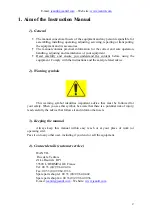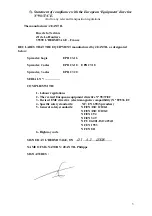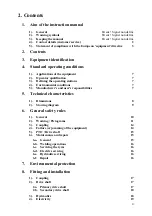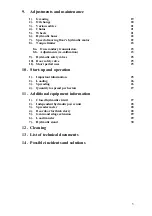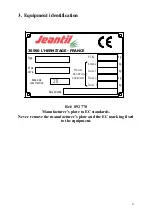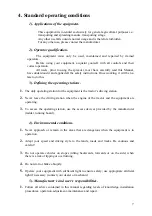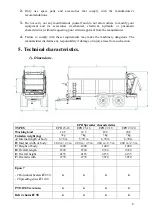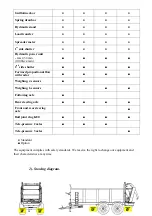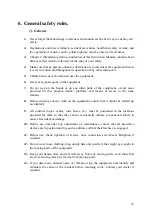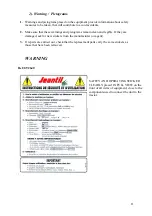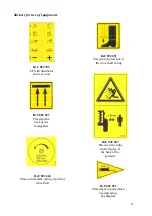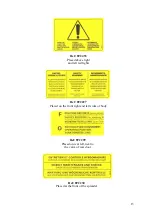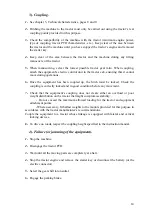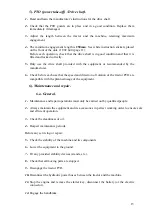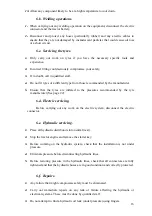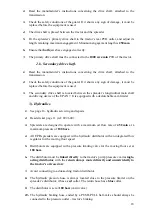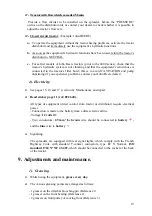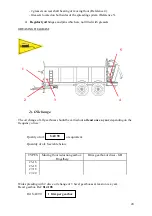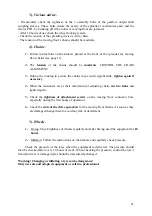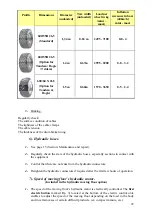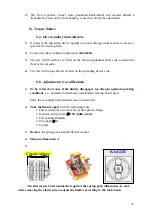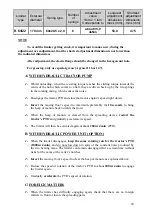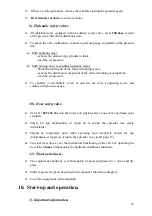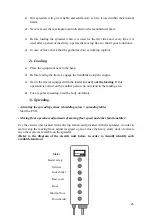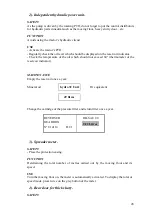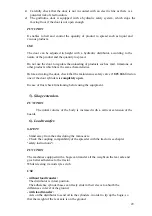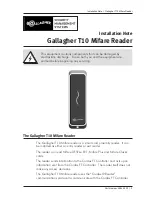
14
3).
Coupling.
1-
See chapter 5, Technical characteristics, pages 8 and 9.
2-
Hitching the machine to the tractor must only be carried out using the tractor’s rear
coupling points provided for this purpose.
3-
Check the compatibility of the machine with the tractor (minimum engine power,
type of coupling, tractor PTO characteristics, etc.). Keep clear of the area between
the tractor and the machine until you have stopped the tractor’s engine and removed
the starter key.
4-
Keep clear of the area between the tractor and the machine during any lifting
manoeuvre of the tractor.
5-
When manoeuvring, select the lowest possible tractor gear ratio. When coupling,
attach the equipment’s electric control unit in the tractor cab, ensuring that it cannot
move during operations.
6-
Once the equipment has been coupled up, the hitch must be locked. Check the
coupling is correctly locked and in good condition before any movement.
7-
Check that the equipment’s coupling does not create either an overload or poor
weight distribution on the tractor that might compromise stability:
- Do not exceed the maximum allowed loading for the tractor and equipment
attachment points.
-Where necessary, fit ballast weights to the mounts provided for this purpose in
accordance with the tractor manufacturer’s recommendations.
Couple the equipment to a tractor whose linkage is equipped with lateral and vertical
locking devices.
8-
To drive on roads, respect the coupling height specified in the instruction manual.
4).
Failure (or jamming of the equipment).
1-
Stop the machine.
2-
Disengage the tractor PTO.
3-
Wait until all the moving parts are completely at a halt.
4-
Stop the tractor engine and remove the starter key or disconnect the battery (or the
electric connector).
5-
Select the gear shift into neutral.
6-
Engage the parking brake.


